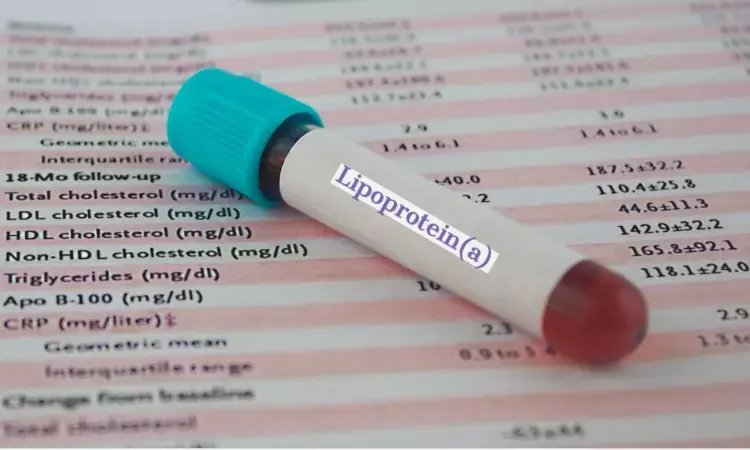- Home
- Medical news & Guidelines
- Anesthesiology
- Cardiology and CTVS
- Critical Care
- Dentistry
- Dermatology
- Diabetes and Endocrinology
- ENT
- Gastroenterology
- Medicine
- Nephrology
- Neurology
- Obstretics-Gynaecology
- Oncology
- Ophthalmology
- Orthopaedics
- Pediatrics-Neonatology
- Psychiatry
- Pulmonology
- Radiology
- Surgery
- Urology
- Laboratory Medicine
- Diet
- Nursing
- Paramedical
- Physiotherapy
- Health news
- Fact Check
- Bone Health Fact Check
- Brain Health Fact Check
- Cancer Related Fact Check
- Child Care Fact Check
- Dental and oral health fact check
- Diabetes and metabolic health fact check
- Diet and Nutrition Fact Check
- Eye and ENT Care Fact Check
- Fitness fact check
- Gut health fact check
- Heart health fact check
- Kidney health fact check
- Medical education fact check
- Men's health fact check
- Respiratory fact check
- Skin and hair care fact check
- Vaccine and Immunization fact check
- Women's health fact check
- AYUSH
- State News
- Andaman and Nicobar Islands
- Andhra Pradesh
- Arunachal Pradesh
- Assam
- Bihar
- Chandigarh
- Chattisgarh
- Dadra and Nagar Haveli
- Daman and Diu
- Delhi
- Goa
- Gujarat
- Haryana
- Himachal Pradesh
- Jammu & Kashmir
- Jharkhand
- Karnataka
- Kerala
- Ladakh
- Lakshadweep
- Madhya Pradesh
- Maharashtra
- Manipur
- Meghalaya
- Mizoram
- Nagaland
- Odisha
- Puducherry
- Punjab
- Rajasthan
- Sikkim
- Tamil Nadu
- Telangana
- Tripura
- Uttar Pradesh
- Uttrakhand
- West Bengal
- Medical Education
- Industry
High concordance in high Lp(a) levels among first- and second-degree relatives, finds study

USA: Findings from a cross-sectional study suggested over 40% yield of cascade screening of first-degree relatives of people with high lipoprotein(a) levels. The findings imply that if implemented at scale, cascade screening of first-degree relatives of individuals with high lipoprotein(a) levels is likely to identify a substantial number of additional high-risk individuals.
The study, published in JAMA Cardiology, supports a recent recommendation for using this approach to identify individuals at risk of atherosclerotic cardiovascular disease (ASCVD) based on Lp(a) concentrations.
In the cross-sectional analysis, 47.0% of first-degree relatives of UK Biobank participants with a lipoprotein(a) concentration of at least 125 nmol/L were similarly affected, compared with 16.4% unrelated individuals.
Lp(a) concentrations are a highly heritable and potential causal risk factor for ASCVD. Recent consensus statements by the American Heart Association (AHA) and the European Atherosclerosis Society recommend screening of relatives of individuals with high Lp(a) concentrations, but in large populations, the expected yield of this approach has not been quantified. To determine the same, Laurens F. Reeskamp, University of Amsterdam, Amsterdam, the Netherlands, and colleagues aimed to measure the prevalence of high Lp(a) concentrations among first- and second-degree relatives of people with high Lp(a) concentrations compared with unrelated participants.
For this purpose, the researchers compared pairs of first-degree (n = 19 899) and second-degree (n = 9715) relatives with measured Lp(a) levels from the UK Biobank study and random pairs of unrelated individuals (n = 184 764). The data was collected from 2006 to 2010 and analyzed from 2021 to 2023. The analysis included a total of 52 418 participants (mean age, 57.3 years; 56.9% were women).
The main outcome of the study was determined as the concordance of clinically relevant high Lp(a) levels in first- and second-degree relatives of index participants having high Lp(a) levels.
The authors reported the following findings:
- Levels of Lp(a) were correlated among pairs of first-degree (Spearman ρ = 0.45) and second-degree (Spearman ρ = 0.22) relatives.
- 47.0% of first-degree and 31.8% of second-degree relatives of index participants with high Lp(a) levels also had elevated concentrations compared with 16.4% pairs of unrelated individuals.
- The concordance in high Lp(a) levels was generally consistent among subgroups (eg, those with prior ASCVD, postmenopausal women, and statin users).
- The odds ratios for relatives to have high Lp(a) levels if their index relative had a high Lp(a) level compared with those whose index relatives did not have high Lp(a) levels were 7.4 for first-degree relatives and 3.0 for second-degree relatives.
"Similar to familial hypercholesterolemia screening, these findings support the implementation of the cascade screening for high Lp(a) levels in relatives of people with high Lp(a) levels to identify and early and effectively treat patients at increased Lp(a)-attributable ASCVD risk," the researchers concluded.
Reference:
Reeskamp LF, Tromp TR, Patel AP, et al. Concordance of a High Lipoprotein(a) Concentration Among Relatives. JAMA Cardiol. Published online October 11, 2023. doi:10.1001/jamacardio.2023.3548
Dr Kamal Kant Kohli-MBBS, DTCD- a chest specialist with more than 30 years of practice and a flair for writing clinical articles, Dr Kamal Kant Kohli joined Medical Dialogues as a Chief Editor of Medical News. Besides writing articles, as an editor, he proofreads and verifies all the medical content published on Medical Dialogues including those coming from journals, studies,medical conferences,guidelines etc. Email: drkohli@medicaldialogues.in. Contact no. 011-43720751


